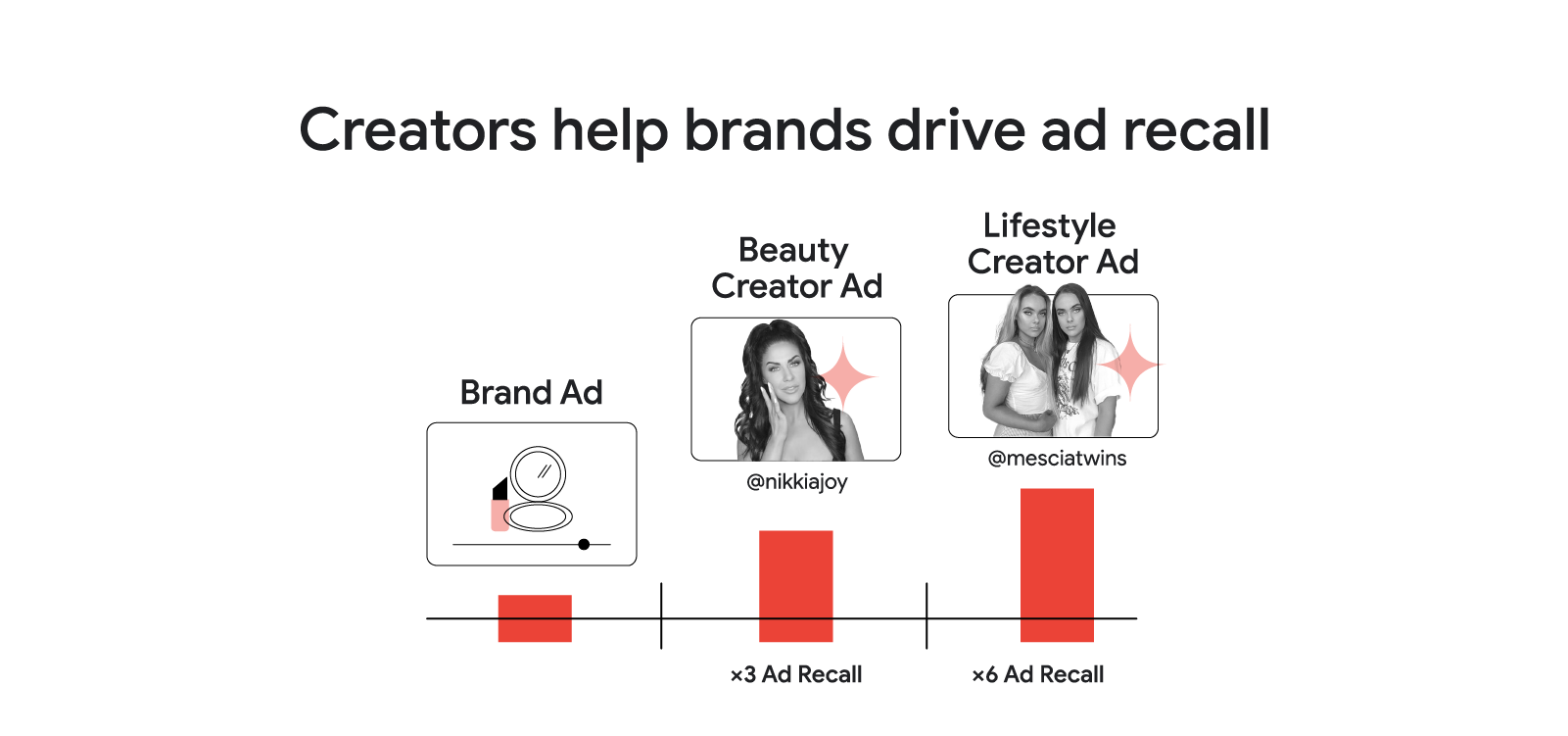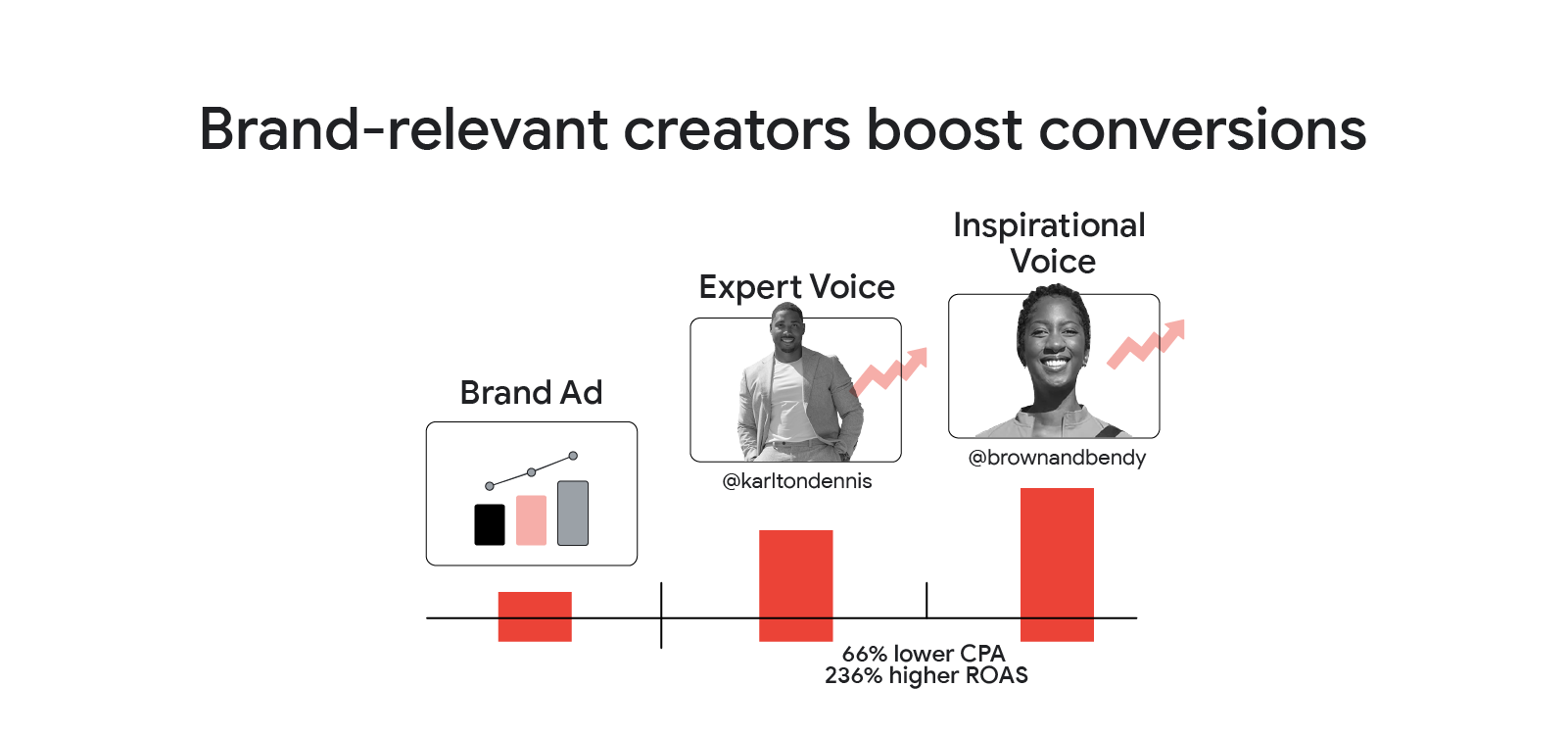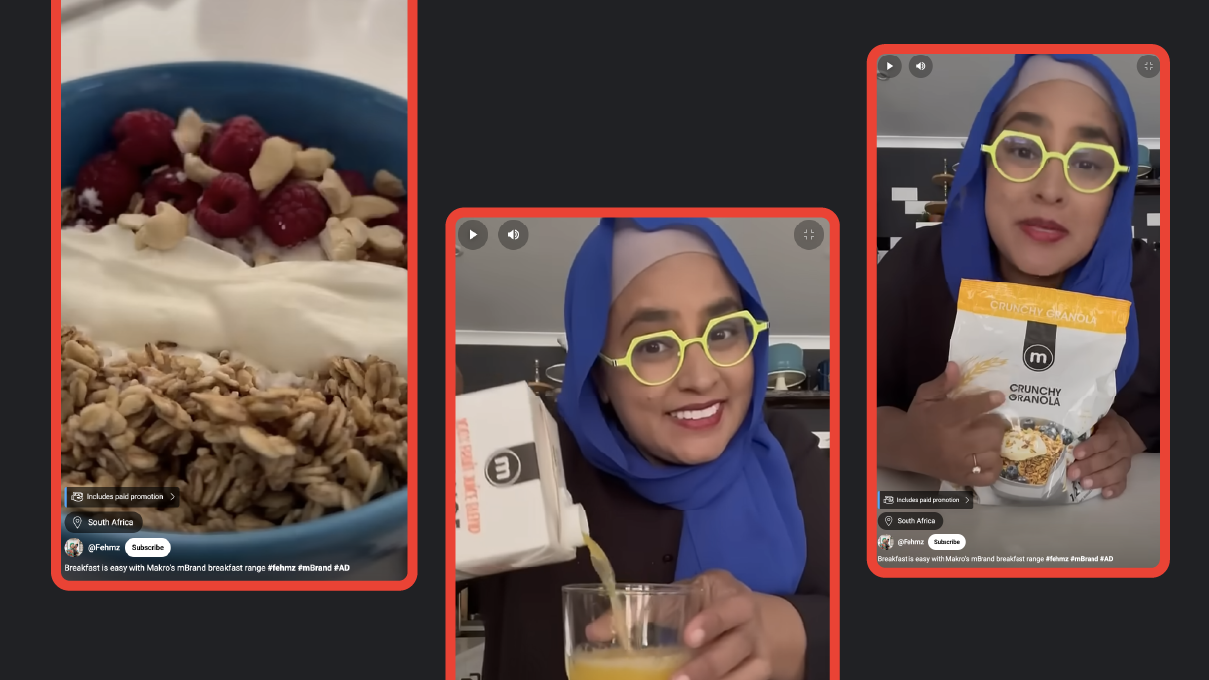Fifty four per cent of people would prefer to watch creators breaking down a major event — like the Oscars or Grammys — rather than watch the event itself.1 That’s because creators, through their authentic content, forge strong connections with audiences. And their relevant content also leads to increased trust and loyalty. In fact, creator content is found to be 2X times more credible and relatable than branded content.
That’s why Google Creative Works ran a series of ad experiments. We wanted to learn how brands can leverage the power creators have to connect with audiences. We did this by pairing key global clients with 11 diverse creators across eight verticals in six countries.
Here are three key findings from our research, with actionable tips on how marketers in the Middle East and North Africa (MENA) can get the most out of creator partnerships:
1. Local creator partnerships drive ad recall and engagement
Creators’ authenticity and relatability have a positive impact on ad recall. This is important because ad recall plays a vital role in building brand awareness, providing a competitive edge, influencing purchase decisions, and ultimately driving business success.
For our experiment, a well-known global beauty brand with a hub in Australia wanted to challenge their traditional approach of using only global brand ads for local campaigns by creating their own assets in-market.
Without a creative agency their production capabilities were limited. So they made the decision to partner with lifestyle creators, Mescia Twins, and beauty creator Nikkia Joy, to create organic content and creator ads.
The brand launched the campaign using Skippable in-stream ads. A 30-second global brand ad showcased a celebrity and models exploring a vibrant cityscape, interspersed with product shots of lipsticks. In contrast, the creator ads — matching the brand ad’s length — featured the creators applying the lipstick. They also encouraged viewers to utilise AR Beauty Try On via their mobile phones to try the lipstick on with them, making it a much more interactive experience.
A Brand Lift study revealed that the Nikkia Joy’s ad achieved a 3X higher ad recall than the brand ad, with the Mescia Twins’ ad achieving a 6X higher ad recall. These results are down to the creators’ relatable and authentic content that easily captures their lifestyle and make-up loving audiences’ attention.

Top tip for marketers: Give creators the freedom to create authentic engagement
Creators are more than just the talent you hire. They’re the hook.
While clear and specific guardrails — for example, letting a creator know they can use sound and visual effects to create excitement, but that they can’t change the main message — are important, it’s also vital to give them the opportunity to go off script. This allows the creator to talk to your MENA audience in a genuine way that resonates.
Keep in mind that creators really value their freedom. Thirty seven per cent believe that brands should be providing them with more creative freedom, with 36 per cent valuing the importance of establishing meaningful partnerships.
2. Brand-relevant creators boost conversions
In our experiment, a small business set-up provider wanted to understand the impact that creatives could have on conversions, cost per acquisition (CPA), and return on ad spend (ROAS). They ran a brand ad and two creator ads using a mix of skippable and unskippable YouTube ad formats, as well as Bumper ads.
One of the creator ads featured tax strategist Karlton Dennis as an ‘expert voice’. In the video, Dennis discusses in a formal voice how easy it is to use the featured brand to set up a business.
The other ad features yoga teacher and social media consultant, Brown and Bendy, as a ‘creative and inspirational voice’. While Brown and Bendy shares the same message as Dennis, she does so in a more relaxed and humorous tone.
Since the brand offers business setup services to diverse industries, collaborating with creators who cater to different audiences was a smart strategic move, enabling the brand to reach a broader audience.
Both creator ads far outperformed the brand ad, achieving an average of 236% higher ROAS and a 66% lower CPA.

What’s particularly interesting is that Brown and Bendy’s ad achieved a 143% higher conversion rate compared to the brand ad. This despite the fact that she only had 106K subscribers at the time, compared to Karlton Dennis’ 498K subscribers. That’s because her creative and inspirational voice made the ad feel more emotive.
Top tip for marketers: Choose your creator based on ‘voice’, not subscriber count
Success is not necessarily correlated to a creator's subscriber count. It depends on the combined strength of your storytelling and the brand ambassador you choose. Ultimately, selecting a creator whose content and tone of voice align most closely with your brand — and intended audience — is crucial.
For example, while our experiment shows that emotive creator ads tend to drive higher engagements and conversions, this only works for less formal businesses who can adopt a conversational and creative voice. On the other hand, people trust expert creators to deliver stories in a more formal and rational language for brands perceived to be more serious.
When selecting a creator in the MENA region, it’s important to consider the most relevant content genre based on the seasonal moment you’re in. For example, we know that comedy and food preparation are popular topics during Ramadan, while fan communities are evergreen.
3. Combining brand and creator ads amplifies performance
Creators play a pivotal role in driving consumer purchasing decisions. Shoppers are 3.5 times more likely to purchase products featured in creator ads than traditional brand advertisements.
But here’s a little secret unearthed in our research: while good brand ads perform well on their own, combining brand ads with creator ads makes them even more powerful.
As part of our ads experiment, an international mattress and bedding manufacturer wanted to challenge their traditional approach to performance video campaigns. They did this by comparing standard ‘direct response’ brand ads — ads featuring brand talent talking about products — with social platform savvy creator-made ads showcasing creators talking about products in their authentic voices.
The experiment took a three-pronged approach, with the ads launched through Video action campaigns and YouTube Shorts, with video experiments determining which video ads were most effective:
- A third of potential YouTube viewers were shown standard, direct response ads for two weeks.
- Another third saw ads made by creators for the same duration.
- The rest were shown a combined ad featuring a creator on the left discussing the brand's mattresses, with brand talent silently showcasing the product on the right. These short-form ads ran alongside each other, featuring regular visuals of the brand name in only the brand ad, with the creator ad talking about the benefits instead. At the end of both videos, the brand logo appeared across the screen with a website call to action, as per the illustrated example below:
The creator-only ad performed well, achieving a 53% increase in ROAS and a 30% reduction in CPA compared to the brand ad. But the ad that showed the creator and brand talent side-by-side performed even better, seeing a 61% increase in ROAS, and a 33% reduction in CPA.
The results encouraged the brand to refocus efforts on optimising their existing video assets to resemble creator-made ads. They'll also develop new creator-made ads in all ongoing video campaigns, rather than using direct response brand ads alone.
Top tip for marketers: Drop your idea of what an ad should look like
One of the most important aspects of producing a successful creator-meets-brand campaign is the simplest: freeing yourself from thinking an ad has to look a certain way.
Your brand is an expert in your industry. For the base of your ad, focus on the visual fundamentals of your product and its benefits. Then let the creator bring in added personality.
Creators are experts in authenticity and audience understanding, so it’s important to let them do their thing when creating their ads. They know how to build a bridge between consumers and brands by pairing a company’s values with their own voice and made-for-YouTube content.
No matter which ad you decide to run, don’t forget to leverage YouTube’s ABCD principles to ensure you’re meeting video creative best practices.







